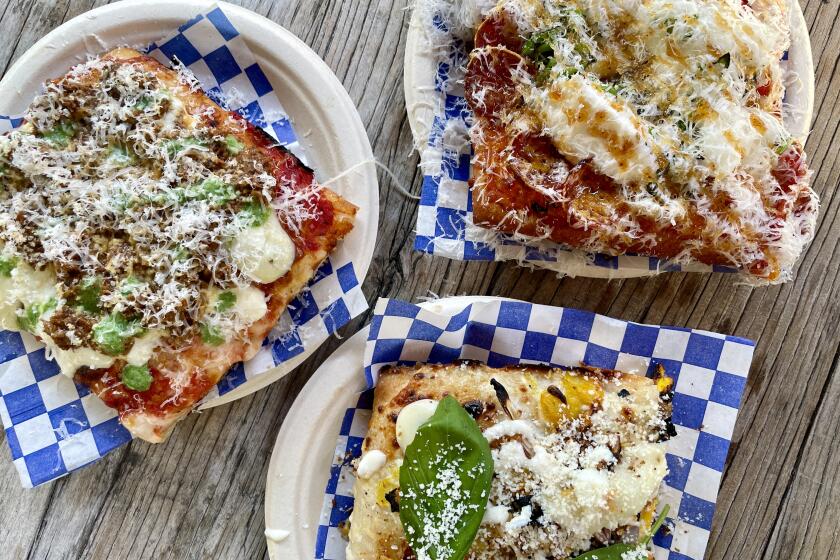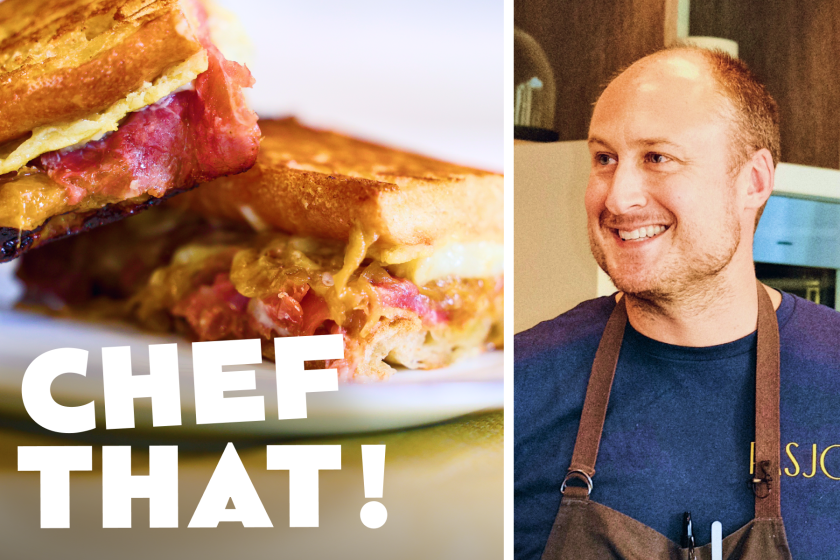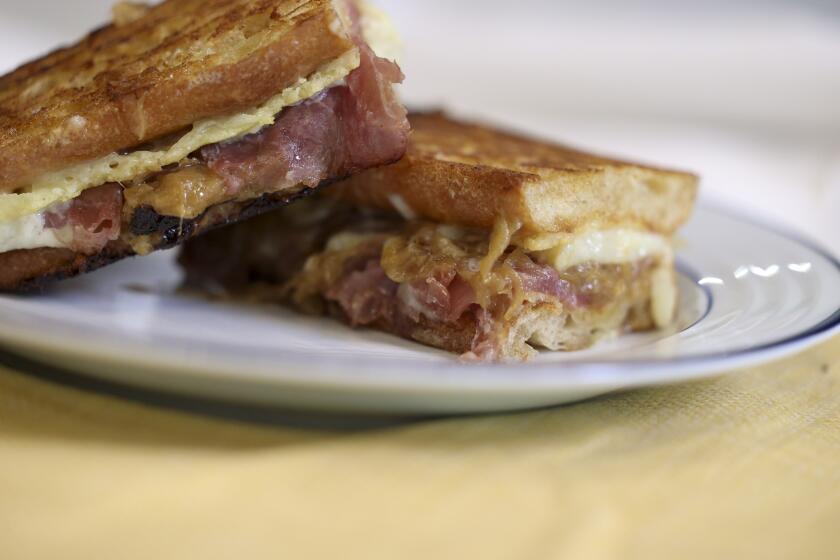Counter Intelligence: Thou shalt not make substitutions at the Parish
Sang Yoon started the no-substitutions or modifications trope at Father’s Office, I think, where he refused to serve his notorious hamburger without blue cheese or countenance ketchup on his fries. Vinny Dotolo and Jon Shook turned it into an aesthetic at Animal; you ate their pig’s ears and oxtail loco moco their way or you didn’t eat it at all. The chefs at sushi bars like Nozawa and Hiko famously threw patrons out of their restaurants when they asked for spicy tuna rolls, and I have no idea what Jordan Kahn at Red Medicine might do if a table asked for the sauce on the side.
One of the main currents in Los Angeles restaurants over the last several years has been chefs’ food without compromise — dinner served as accumulations of precise, specific portions, in a specific order — not a fancy tasting menu, but the way chefs tend to eat themselves. A lot of people, including me, have griped about the recent inevitability of these small-plates menus, but if you look at it a certain way, we have entered the culinary equivalent of the album era in rock ‘n’ roll, the point when the basic unit of consumption started to become not the course, but the meal. “Meet the Beatles!” had become “The Dark Side of the Moon.”
Yoon, and Shook and Dotolo may be better known, but the dark prince of No Substitutions Nor Modifications is Casey Lane of Tasting Kitchen in Venice, a chef who barely acknowledged that what he was cooking in was a restaurant until he had been there almost a year, who maintained a fairly expensive all-Italian wine list impenetrable even to experts in Brunello and Chianti, and a menu that seemed to consist mostly of variations on pasta, salad and toast. It was delicious toast, of course, thick, made with great bread, and wood-grilled, but it was still toast. I’ve been to Tasting Kitchen probably a dozen times, marveling at the Portland, Ore., chef’s freshly made tonic water and the art-directed plates of grilled anchovies, but I’m not sure I understood what I was supposed to be eating. I’m not sure I was meant to understand.
The Parish is Lane’s newest no-substitutions project, a bi-level restaurant in that odd, wedge-shaped building where Spring and Main streets meet downtown. You can sit on the open triangular terrace on the south end of the restaurant, gnawing on chicken wings and watching police cars and taxicabs screech from one one-way street to the other — it feels very much like New York’s Tribeca neighborhood circa 1985. You can trip up the narrow stairs to the second-floor barroom, lighted by the dim, bare Edison bulbs all but mandatory in moody new bars, or crowd into what seems like a lunchroom by the kitchen downstairs, or sit at the long bar, supervised by John Coltharp, the maestro who presided over the earliest days of Seven Grand. The dining room is open until 2 a.m.
The Parish is a gastropub; the Parish even calls itself a gastropub. But while it has all the characteristics of the tribe — fish and chips, a decent burger, a bartender obsessed with pairing each dish with a different locally brewed ale — it is a lot closer to April Bloomfield’s original Spotted Pig in Greenwich Village than it is to Melrose beer bars, a restaurant that seems to adopt the form only to subvert it.
So that cheeseburger? The cheese in question is Époisses, the soft-ripened goo from Burgundy known as France’s stinkiest. Symbolist poet Paul Valéry said it smelled like the feet of God, and the dripping mass, distinctly not comfort food, makes your eyes water even as you inhale it. The pan-fried chicken, a deeply flavored specimen whose crust is crumbly rather than crisp, is served with smoky grilled peaches that somehow manage to taste meatier than the bird.
The kitchen occasionally buys an entire pig and makes full use of it: gargantuan pork T-bones; towering meat pies filled with soft, stewed pig’s head and roast vegetables; a walk-in full of curing charcuterie. Lane’s interpretation of poutine, the calorific Quebecois concoction of French fries and gravy adopted as kind of the culinary mascot of Animal, includes Indian paneer instead of the traditional cheese curds (it works), a handful of peas where you wouldn’t think peas belong, and a slippery scoop of boned pig’s foot supplementing the sauce. The dish becomes something else altogether, floating halfway between India and France. (The poutine with fried oysters may be even better.)
You can find grilled beef marrow with celery, sticky chicken wings close to Tasting Kitchen’s standard, and a big bowl of clams spiked with chunks of spicy salame, everything you might desire to soak up a draught of Brouwerij West Saison Extra or of Eagle Rock Manifesto Witbier. The Parish is kind of a meaty place.
But some of the best dishes here tend to be quiet food: freshly made dal; scoops of freshly made sheep’s milk ricotta on slabs of grilled brioche; bowls of fried chickpeas studded with fleshy fried olives; or a bowl of super-concentrated tomato soup served with a grilled cheese sandwich to nosh on. A salad of beets and mache is dressed with a thin yogurt dressing — you don’t realize that the subtly bitter top note is molasses until you have almost finished the plate. Vegetarians, though perhaps not vegans, will find plenty to eat here.
You will eat grilled corn with honey butter. You will buzz through Coltharp’s cocktails, maybe a Black Bee with bourbon and stout, or a Real McCoy, an abstracted daiquiri with Jamaican and agricole rum. You will have an odd, treacly tart called Elvis Goes to Sussex, and you will be happy enough, because Casey Lane’s rules of engagement have gradually become your own.
The Parish
Casey Lane reinvents the gastropub ... as a gastropub.
Location: 840 S. Spring St., Los Angeles, (213) 225-2400
Prices: Snacks $6-$11; small plates $6-$12; larger plates, $12-$20, more for big meat; desserts $7-$9.
Details: Open daily, 5 p.m. to 2 a.m. Credit cards accepted. Full bar. Valet parking.
More to Read
Eat your way across L.A.
Get our weekly Tasting Notes newsletter for reviews, news and more.
You may occasionally receive promotional content from the Los Angeles Times.


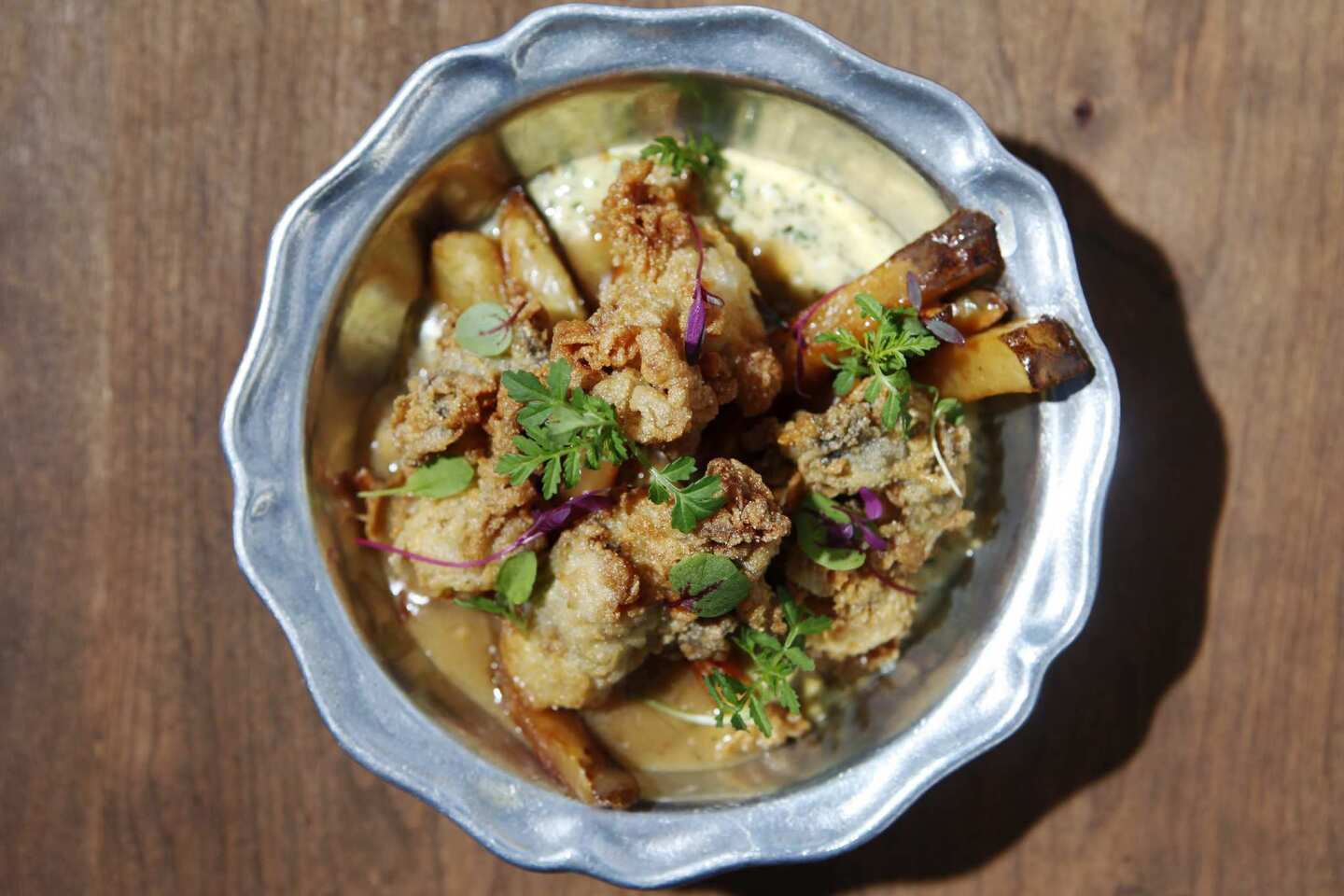
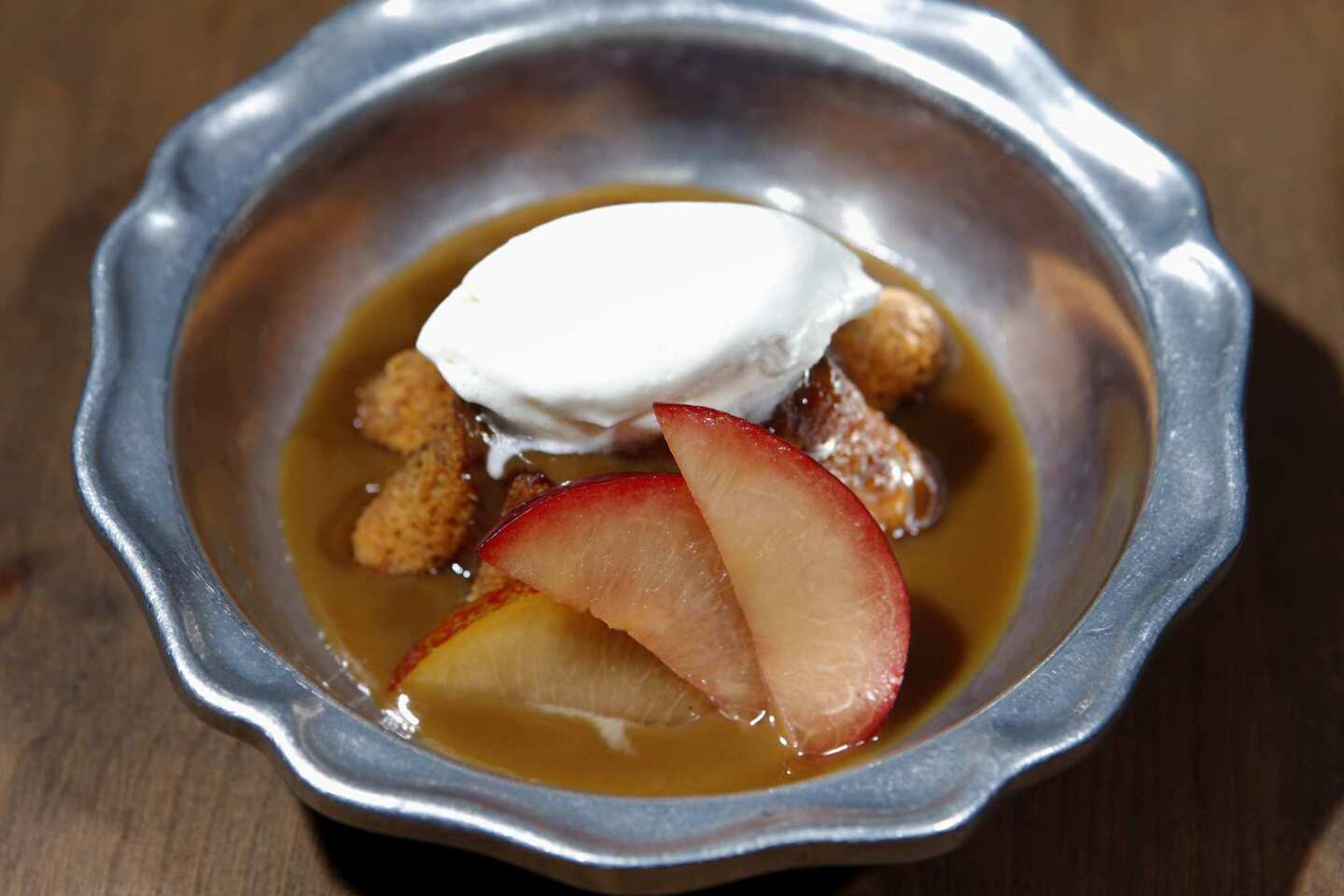
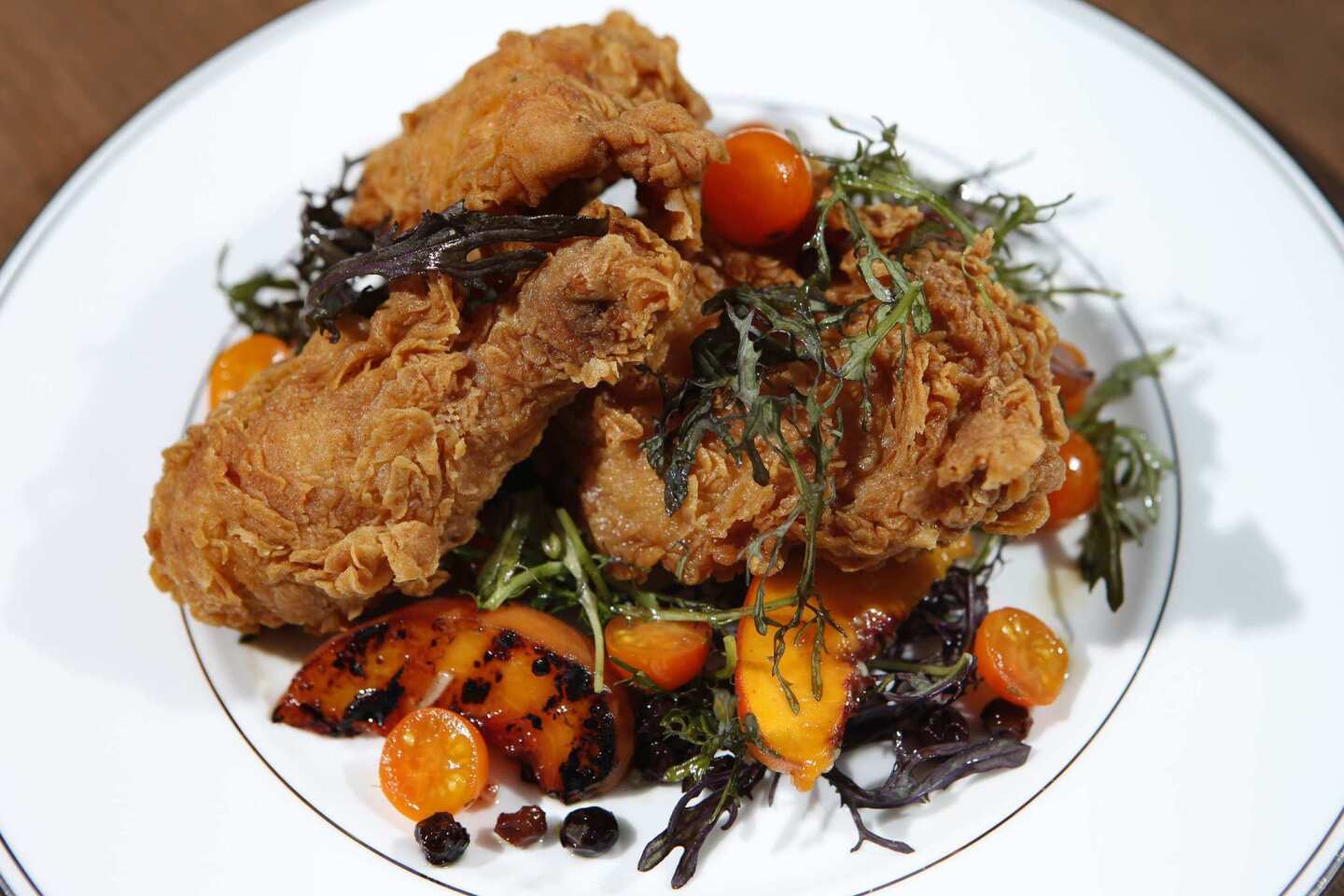
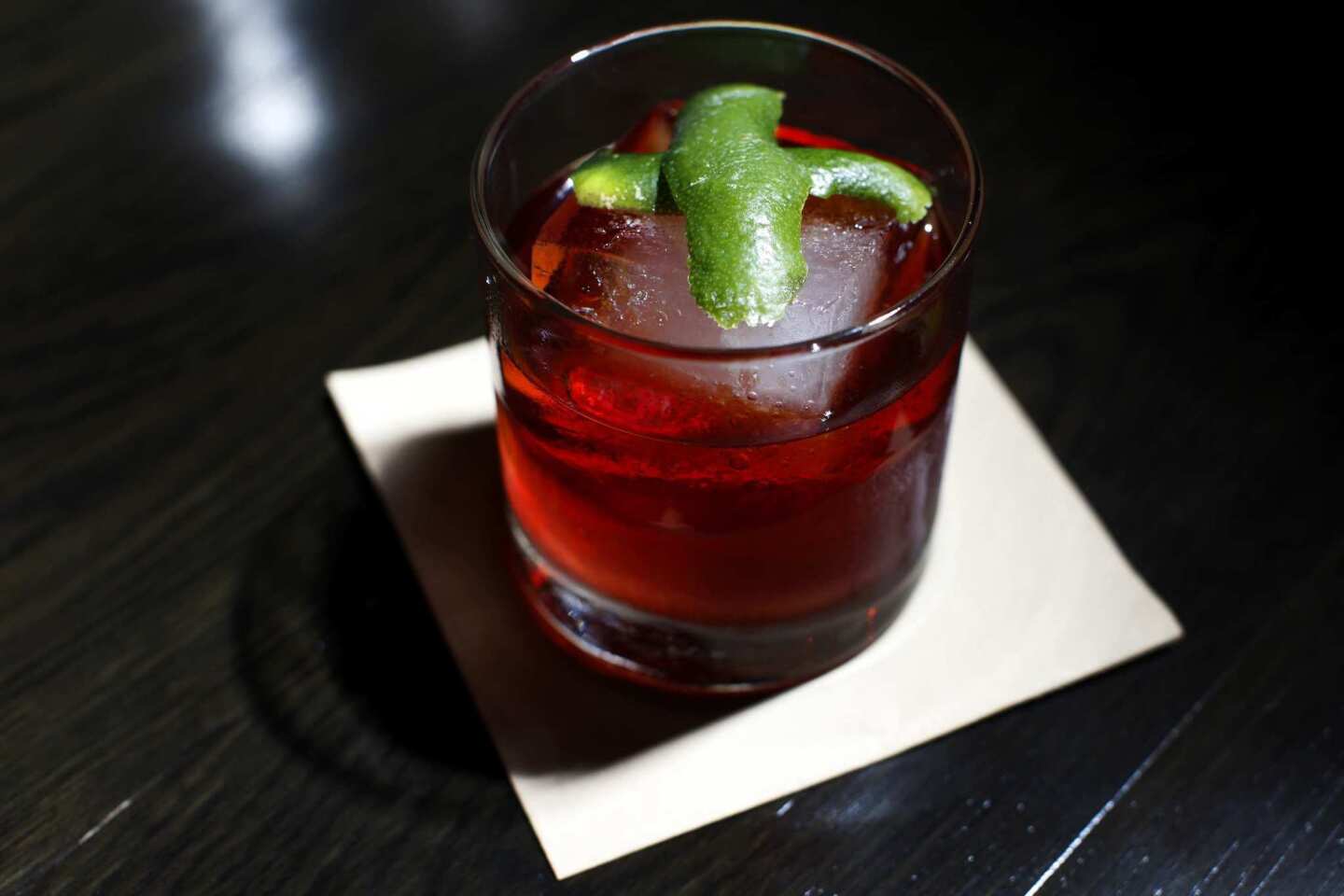

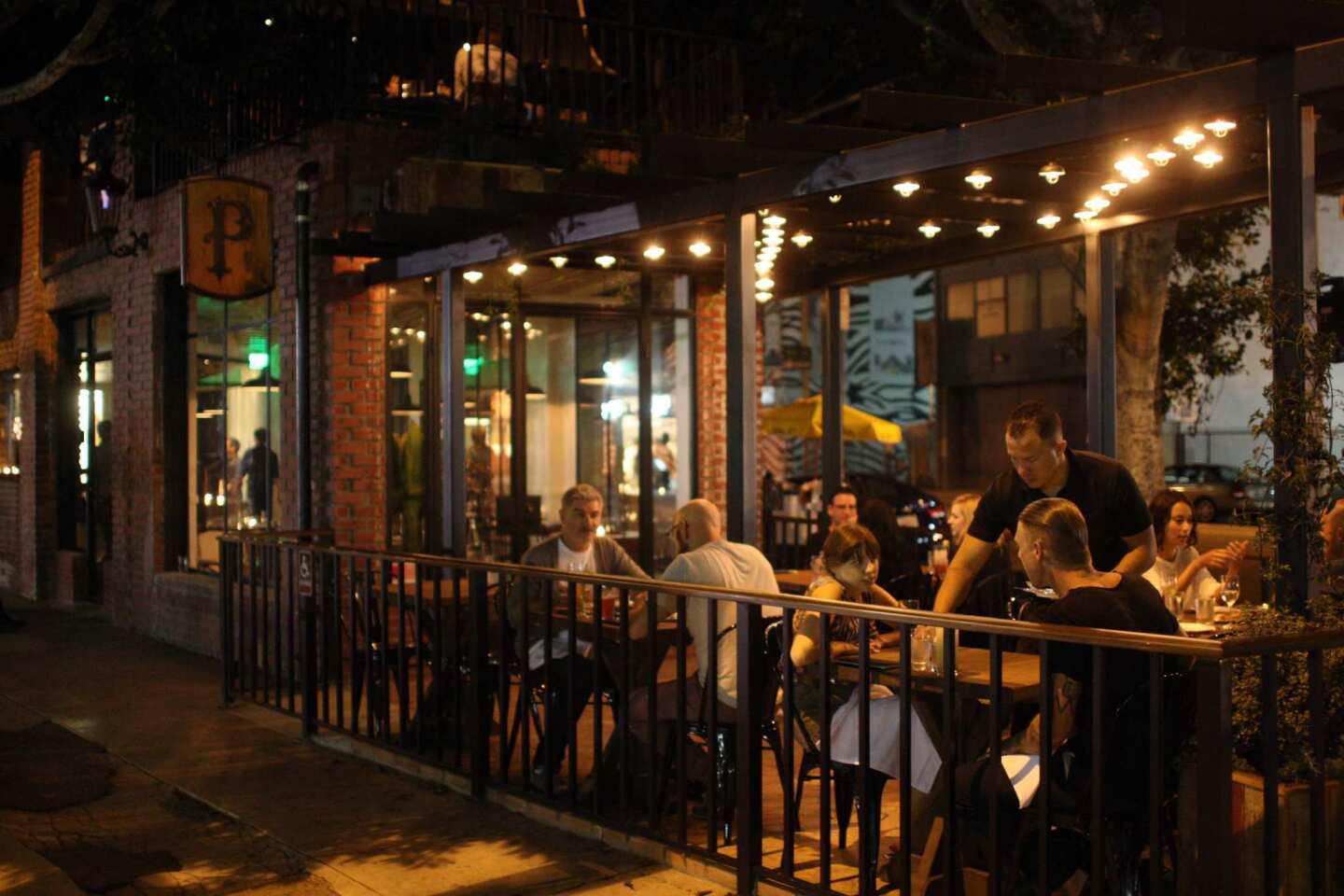

![LOS ANGELES, CA - JUNE 17: [Cody Ma and Misha Sesar share a few dishes from their Persian Restaurant Azizam] on Monday, June 17, 2024 in Los Angeles, CA. (Ethan Benavidez / For The Times)](https://ca-times.brightspotcdn.com/dims4/default/7ffc7f6/2147483647/strip/true/crop/5110x3417+306+0/resize/320x214!/quality/75/?url=https%3A%2F%2Fcalifornia-times-brightspot.s3.amazonaws.com%2F79%2Fdc%2F4d29255545f5b9813315901692bc%2F1459972-fo-azizam-review20-eba.JPG)




